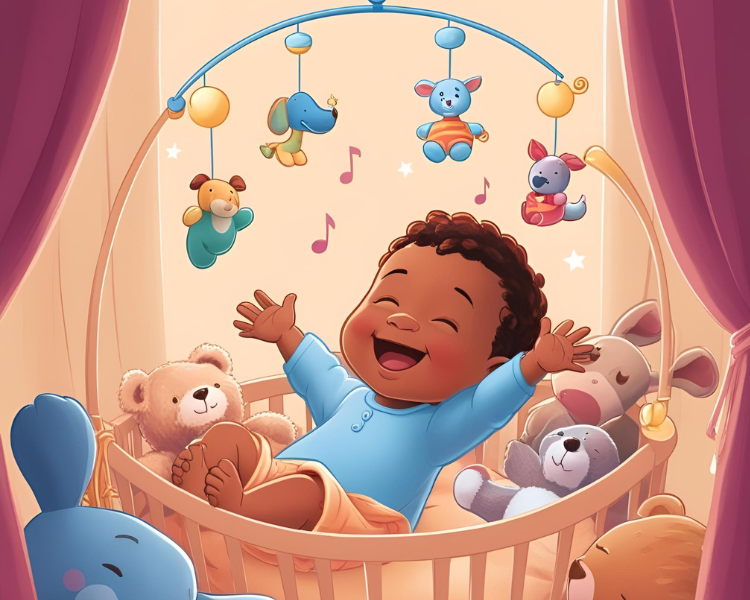
The Power of Lullabies: How Music Helps Kids Sleep Better
Share
Lullabies have been used for centuries to soothe babies and children to sleep. The gentle rhythm and calming melodies create a sense of security, helping little ones drift off peacefully. But did you know that lullabies do more than just comfort your child? Scientific research suggests that music has a powerful impact on sleep quality, emotional well-being, and cognitive development. Let’s explore how lullabies can help your child sleep better and how you can incorporate them into your bedtime routine.
The Science Behind Lullabies and Sleep
Lullabies are more than just beautiful songs; they have a direct effect on the brain. Studies show that soft, repetitive music can:
-
Slow the heart rate and lower blood pressure
-
Reduce cortisol levels, decreasing stress and anxiety
-
Trigger the release of oxytocin, the "love hormone" that fosters bonding and relaxation
-
Help regulate breathing patterns, making it easier to fall asleep
Music engages multiple areas of the brain, creating a calming effect that prepares children for restful sleep.
Benefits of Lullabies for Kids:
1. Creates a Soothing Sleep Environment
Lullabies provide a familiar and comforting sound that signals to your child that it’s time to wind down. The predictable rhythm helps create a sleep-inducing environment, making bedtime smoother.
2. Strengthens Parent-Child Bonding
Singing lullabies to your child fosters a deep emotional connection. The gentle tone of your voice reassures them, creating a sense of safety and love, which promotes better sleep.
3. Reduces Nighttime Anxiety
If your child experiences bedtime worries or separation anxiety, lullabies can serve as a comforting tool. The repetitive, soothing melody helps distract from fears and encourages relaxation.
4. Improves Sleep Patterns
Lullabies can help establish a sleep routine, signaling to your child’s brain that it’s time for bed. Over time, the association between music and sleep can lead to longer, more restful nights.
5. Enhances Language and Cognitive Development
Listening to lullabies helps children develop language skills, rhythm recognition, and auditory memory. Studies suggest that early exposure to music can improve cognitive development and emotional regulation.
How to Use Lullabies in Your Child’s Bedtime Routine:
1. Choose Gentle and Repetitive Melodies
Opt for soft, slow-tempo lullabies with a gentle rhythm. Popular lullabies include Twinkle, Twinkle, Little Star, Hush, Little Baby, and Brahms’ Lullaby. Classical music and instrumental lullabies are also great choices.
2. Make It a Daily Ritual
Consistency is key. Incorporate lullabies into your nightly routine by singing or playing them at the same time each night. This repetition strengthens sleep associations and signals bedtime.
3. Sing or Play Recorded Lullabies
Your child may respond best to your voice, but recorded lullabies can also be effective. Soft instrumental versions or nature sounds mixed with melodies can create a peaceful atmosphere.
4. Combine with Other Relaxation Techniques
Enhance the calming effect by pairing lullabies with:
-
A warm bedtime bath
-
Gentle rocking or cuddling
-
Dim lighting or a nightlight
-
Soft, breathable pajamas to ensure comfort
